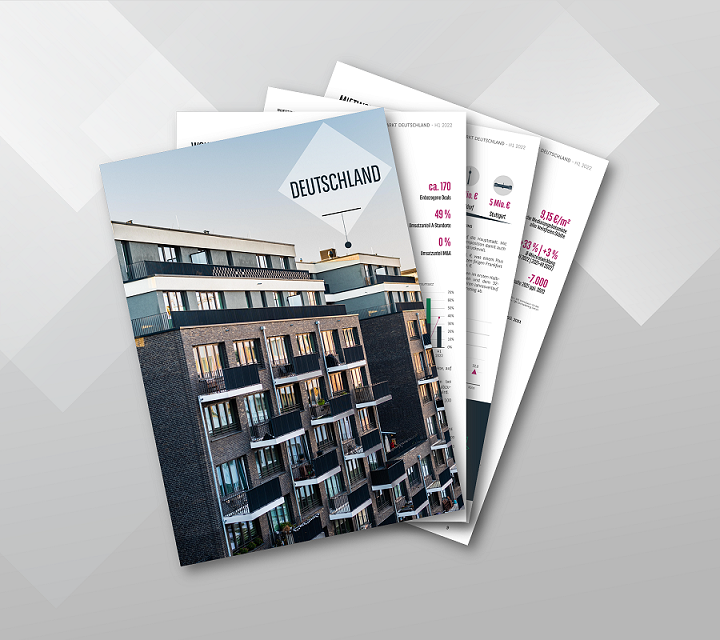Trends and insights of the residential market in Germany
Germany’s population has grown 5% over the past 10 years (2023: 84.7 million). Although the demographic shift is having a negative impact on population growth, the upward net migration trend is causing population figures to rise. While Germany’s population appeared to almost stagnate between 2017 and 2021, it has risen noticeably in the past two years, particularly due to the high influx of refugees from Ukraine.
Find out more about current (rent) prices in Berlin and Hamburg and the price trend at a district level in our new District Dashboards. Click here for detailed rent and price comparisons:

CONTENTS AT A GLANCE
-
Prologue [»]
-
Residential investment market Germany
-
Rental housing market Germany
-
Market data on major German cities
-
Factsheets on 109 cities
HIGHLY POSITIVE POPULATION TREND (2013 TO 2023) IN GERMANY'S A-CITIES AND IN BERLIN
-
Germany’s population has grown 5% over the past 10 years (2023: 84.7 million). Although the demographic shift is having a negative impact on population growth, the upward net migration trend is causing population figures to rise. While Germany’s population appeared to almost stagnate between 2017 and 2021, it has risen noticeably in the past two years, particularly due to the high influx of refugees from Ukraine.
-
Germany’s popular A-cities and Berlin in particular (2023: 3.8 million) have to some extent decoupled themselves from the national population trend over the past 10 years with the population in these cities growing almost every year. These locations have also experienced strong positive momentum in terms of residents. This favourable trend is a clear indication that Germany’s top cities remain highly attractive.
RENT PRICES SEE STEEP INCREASE IN CURRENT ENVIRONMENT
-
The favourable population trend combined with limited supply is behind the strong growth in rent prices we are currently seeing. Rents for new-build space in Germany, in Berlin and in the country’s other A-cities have experienced a particularly steep rise in recent quarters.
-
Rents for new build space in Germany have risen steadily since early 2022, up roughly +12% since Q1 of that year.
-
Market activity has been picking up in Germany’s top 7 cities with rents for new-build space in the country’s A-cities (with the exception of Berlin) up around 20% in the past 10 quarters from an already relatively high starting point. The momentum behind this trend recently began to slow compared to activity in Q1 2024. However, the steep rise in rents continues in Berlin with rent prices in the German capital now particularly high.
RENT PRICE TREND IN BERLIN WITH CONSIDERABLY MORE MOMENTUM THAN INCREASE IN PURCHASING POWER
-
Against the background of lively activity in Berlin’s rental market, our approach is to place the current rent trend within the context of the development of purchasing power and inflation and then examine the supply/rent trend in the highly sought-after small rental unit segment.
-
Asking rents in Berlin have increased at an above-average rate for space at both stock buildings and new-builds due to growing demand. Rents have risen +29% for space at stock properties and +21% for new-build space in the past two years alone. This indicates that the favourable momentum behind rent prices has gradually seen a significant move away from the development of purchasing power.
-
While the strong growth in purchasing power in Berlin has more than compensated for inflation in Germany as a whole, rent prices in Berlin have seen a much higher increase than the inflation trend.

